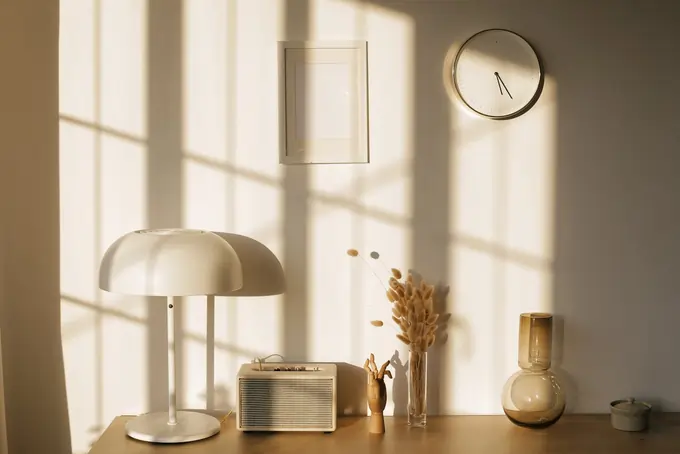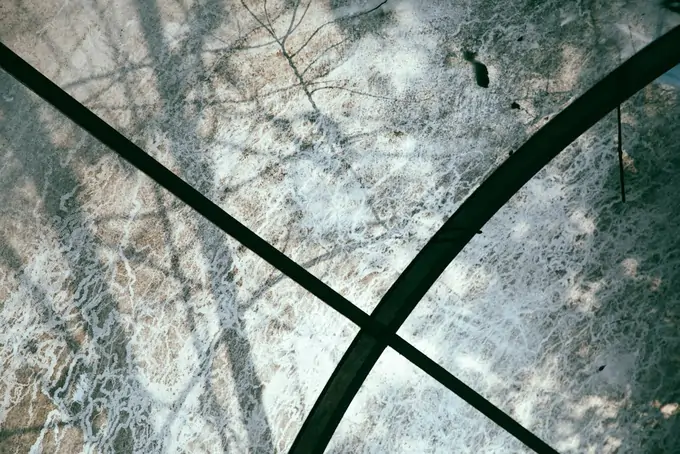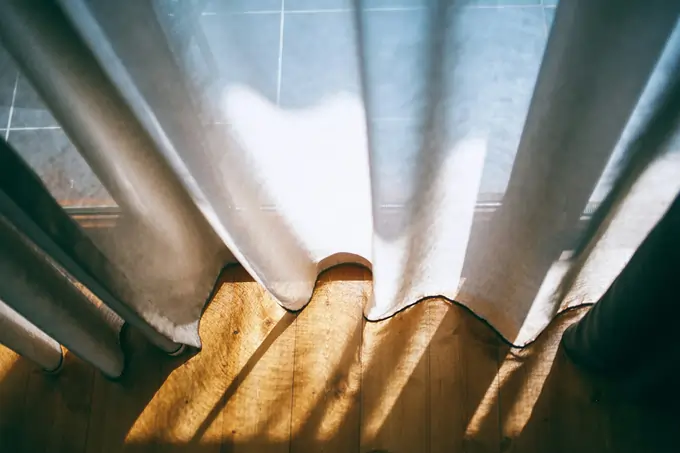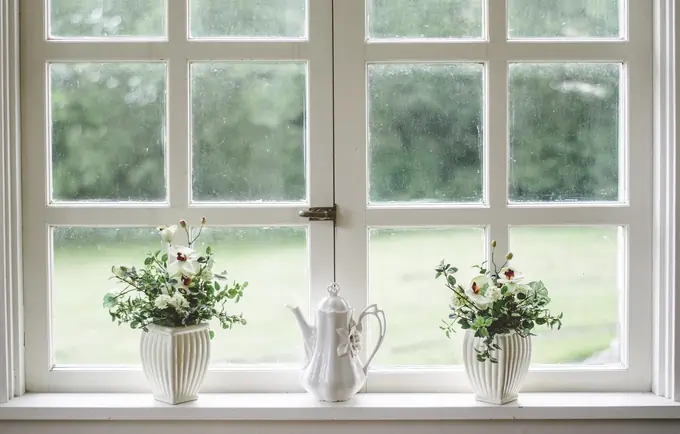Are you tired of living in a dim, gloomy space?
Natural light can transform your home, making it feel more spacious, welcoming, and energizing.
But what if your home lacks windows or faces the wrong direction?
Don’t worry – there are plenty of ways to maximize natural light without major renovations.
In this article, we’ll explore 10 simple yet effective techniques to flood your home with sunshine.
Ready to brighten up your life?
Let’s dive in!
How Can You Maximize Natural Light?
Natural light is a precious resource that can dramatically improve your living space.
It’s not just about aesthetics – studies show that exposure to natural light can boost mood, productivity, and overall well-being.
So, how can you harness more of this free, mood-enhancing resource?
What are Some Simple Ways to Increase Natural Light?
Keep your windows clean.
Dirty windows can block up to 20% of incoming light.
Regular cleaning can make a significant difference in the amount of light entering your home.
Trim outdoor vegetation.
Overgrown trees and shrubs can obstruct sunlight.
Pruning them regularly allows more light to penetrate your windows.
Use light-colored paint.

Dark colors absorb light, while light colors reflect it.
Painting your walls in lighter shades can make your space feel brighter and more open.
Opt for glossy finishes.
Glossy surfaces reflect more light than matte ones.
Consider using semi-gloss or high-gloss paint for an extra boost of brightness.
Rearrange your furniture.
Ensure that large pieces aren’t blocking windows or light paths.
Strategic placement can help light flow more freely throughout your space.
How to Bring More Natural Light into Your Home Effectively?
Install larger windows.
If your budget allows, replacing small windows with larger ones can dramatically increase natural light.
This investment can also improve your home’s value.
Add a skylight.

Skylights can bring in up to 30% more light than vertical windows of the same size.
They’re especially effective in dark hallways or windowless bathrooms.
Consider glass doors.
Replacing solid doors with glass or partially glazed options can help light flow between rooms.
French doors or sliding glass doors are excellent choices for patios or balconies.
Use reflective materials.
Metallic accents, glass tabletops, and mirrors can help bounce light around your space.
These elements add style while maximizing natural illumination.
Install solar tubes.
These innovative devices can bring natural light into spaces where traditional windows aren’t feasible.
They’re less expensive and invasive than skylights, making them a great alternative.
Maximizing Light in a Room Without Major Renovations
Not ready for big changes?
No problem!
There are still plenty of ways to boost natural light without breaking the bank.
Removing heavy curtains can instantly brighten a room.
Opt for sheer curtains or light-filtering blinds instead.
Decluttering your space can also make a big difference.
Fewer obstacles mean more surfaces for light to bounce off.
But what if you’ve tried these tips and still feel like you’re living in a cave?
Don’t worry – we’ve got more tricks up our sleeve.
What Role Do Mirrors Play in Enhancing Natural Light?

Mirrors are like magic wands when it comes to brightening up a space.
They can double the amount of light in a room when used strategically.
But how exactly do they work their luminous magic?
Using Mirrors to Reflect Light Around the Room
Mirrors act like secondary light sources, bouncing incoming light around your space.
This creates the illusion of more windows and amplifies the available natural light.
A large mirror placed opposite a window can dramatically increase brightness.
It’s like adding another window to your room!
Mirrored furniture can also help distribute light more evenly throughout your space.
Consider a mirrored coffee table or dresser to add both style and brightness.
Where to Place Mirrors to Maximize Natural Light
The key to using mirrors effectively is strategic placement.
Positioning matters more than size when it comes to reflecting light.
Place mirrors adjacent to or across from windows to catch and distribute incoming light.
Angling mirrors slightly upward can help reflect light towards the ceiling, brightening the entire room.
Grouping smaller mirrors together can create a similar effect to one large mirror.
This approach adds visual interest while still maximizing light reflection.
But what if mirrors aren’t enough?
What if you need to bring light into spaces where windows simply aren’t an option?
That’s where our next solution comes in…
Are Skylights a Good Option for Increasing Natural Light?
Skylights can be a game-changer when it comes to brightening up your home.
They bring in three times more light than vertical windows of the same size.
But are they the right choice for your space?
Benefits of Installing Skylights
Skylights don’t just increase light – they can also improve ventilation and add a unique architectural element to your home.
They’re particularly effective in north-facing rooms that don’t get much direct sunlight.
Energy savings are another perk of skylights.
More natural light means less need for artificial lighting during the day.
Types of Skylights Ideal for Your Home

There are several types of skylights to choose from, each with its own benefits:
Fixed skylights are the most common and affordable option.
They don’t open but provide excellent light and can be fitted with solar-powered blinds for light control.
Vented skylights can be opened to improve air circulation.
They’re great for bathrooms and kitchens where moisture can be an issue.
Tubular skylights are a compact option for smaller spaces.
They’re less expensive to install and can fit in areas where traditional skylights won’t work.
What to Consider Before Adding Skylights
While skylights offer many benefits, they’re not without drawbacks.
Heat gain in summer and heat loss in winter can be concerns.
Proper installation and energy-efficient models can help mitigate these issues.
Leaks are another potential problem if skylights aren’t installed correctly.
Always hire a professional to ensure proper installation and sealing.
But what if skylights aren’t an option for your home?
Don’t worry – there are still plenty of ways to maximize natural light.
Let’s explore another key factor in controlling light…
How Can Window Treatments Affect Natural Light?
Window treatments play a crucial role in managing natural light.
The right choices can enhance brightness while still providing privacy and light control.
But which options are best for maximizing natural light?
The Best Window Treatments to Maximize Natural Light
Sheer curtains are a top choice for letting in maximum light while maintaining privacy.
They diffuse harsh sunlight, creating a soft, warm glow throughout your space.
Cellular shades offer excellent light control and insulation.
Their honeycomb structure allows light to filter through while still providing privacy when closed.
Roman shades can be adjusted to let in just the right amount of light.
Choose light-colored or semi-sheer fabrics for the best light transmission.
Choosing Light Window Sheers and Blinds
When selecting window treatments, opt for light colors and translucent materials.
These choices will allow more light to pass through while still providing some privacy.
Venetian blinds with wide slats can be angled to direct light upwards.
This technique helps distribute light more evenly throughout the room.
Solar shades are another great option.
They block UV rays and glare while still allowing natural light to filter through.
Utilizing Sheer Curtains for Natural Light

Sheer curtains are incredibly versatile when it comes to managing natural light.
They soften harsh sunlight without blocking it completely.
Layering sheer curtains with heavier drapes gives you the best of both worlds.
You can enjoy maximum light during the day and complete privacy at night.
White or light-colored sheers reflect the most light.
However, pale pastels can add a subtle touch of color while still allowing plenty of light through.
But what if you need even more light in your space?
What if you have rooms with no windows at all?
Don’t worry – there’s still hope.
Let’s explore an innovative solution…
Can Solar Tubes Help In Bringing More Light Into Your Home?
Solar tubes, also known as sun tunnels or light pipes, are an ingenious way to bring natural light into dark spaces.
They’re especially useful for interior rooms or areas where traditional windows or skylights aren’t feasible.
But how exactly do they work?
How Solar Tubes Work in Increasing Light
Solar tubes consist of a dome on the roof that captures sunlight.
This light is then reflected down a highly reflective tube into your living space.
A diffuser at the ceiling level spreads the light evenly throughout the room.
The result?
Bright, natural light in spaces that were previously dim or reliant on artificial lighting.
Advantages of Using Solar Tubes Over Traditional Windows
Solar tubes offer several benefits over traditional windows or skylights:
- They’re more energy-efficient, with less heat loss in winter and heat gain in summer.
- Installation is less invasive and typically doesn’t require major structural changes.
- They’re less expensive than skylights or new windows.
- Solar tubes provide more consistent light throughout the day, even in overcast conditions.
- They’re virtually maintenance-free once installed.
But what if you’ve tried all these options and still want more light?
Don’t worry – we’ve saved one of the most impactful strategies for last.
What Are the Impact of Light Colors and Highly Reflective Surfaces?
The colors and finishes you choose for your walls, floors, and furnishings can have a dramatic impact on natural light.
Light colors and reflective surfaces can make a room feel significantly brighter and more spacious.
But how exactly does this work?
Painting with Light Colors to Increase Natural Light
Light colors reflect more light than dark ones.
Painting your walls white or in pale shades can make your space feel brighter and more open.
Off-white, pale gray, and light beige are excellent choices for a warm, bright feel.
Even pale pastels can work well, adding a touch of color while still reflecting plenty of light.
Don’t forget about your ceiling!
Painting it a shade lighter than your walls can make your room feel taller and brighter.
Using Highly Reflective Surfaces to Bounce Light Around the Room
Reflective surfaces act like mirrors, bouncing light around your space.
Glossy paint finishes reflect more light than matte ones.
Consider using semi-gloss or high-gloss paint on your walls or trim.
Metallic accents can add sparkle and help distribute light.
Think silver picture frames, gold light fixtures, or copper decorative objects.
Glass and crystal elements also help bounce light around.
A glass coffee table or crystal chandelier can add both style and brightness to your space.
By implementing these strategies, you can transform your home into a light-filled oasis.
Remember, maximizing natural light isn’t just about aesthetics – it’s about creating a healthier, more energizing living environment.
So why wait?
Start brightening up your space today!
Your mood, productivity, and overall well-being will thank you.
People Ask
How do you maximize natural light?
Maximizing natural light in your home can make a big difference. One of the best ways to boost natural light in every room is to use mirrors to reflect natural light and bounce the light around. In interior design, placing mirrors strategically can help light around a room. You can also opt for lighter paint colors to help maximise the amount of natural light.
Another way to increase the amount of natural light is by keeping windows clean and free from obstructions, ensuring that they can let light into a room effectively. If you have a dark room, use thin curtains to allow more light to penetrate. Additionally, think about multiple light sources to complement and enhance the natural light in a room.
How do you fix lack of natural light?
Lack of natural light can be a bummer, but here are 10 ways to fix it. First, clean your windows to boost light penetration. Next, use light bulbs that mimic daylight in your home office. Mirrors can reflect light, making the room seem bigger and brighter.
Also, try adding more light around your room by choosing lighter paint colors. Optimizing wall space with shelves that don’t block windows can let light shine better. If it’s a large room, consider using natural light tunnels—they bring more natural light than skylights!
Use curtains that allow light into the room, and set up a home improvement project to add windows or glass doors to increase the natural light flow. Make use of artificial lighting only when necessary to let natural light shine. All these tips can make the room feel warmer and more welcoming
How do you accentuate natural light?
One brilliant way to get more natural light is by using mirrors to reflect light back into the room. Place mirrors strategically to maximize natural light into a room. This helps bring more sunlight and makes the room feel bigger. A room painted in light colors enhances this effect by diffusing natural light pouring throughout.
Additionally, consider installing solar tubes or skylights to increase the amount of sunlight streaming in, making your space feel more open. Keep the front of windows clear of obstructions to let sunlight to stream toward the house. More windows means light better distributed throughout your living space.
Using these tricks brings a lot of natural light around your home. Remember, having much light can make a significant difference, so always look for creative way to bring light in. You’ll appreciate how much natural light can transform your living areas!
How do you magnify natural light?
Looking to amp up your space with more light? Here’s a trick: mirrors reflect light and can really brighten things up. Just strategically place some around your room to magnify natural light. It’s easy to make a gloomy room feel fresh and welcoming!

